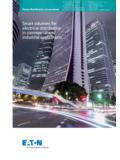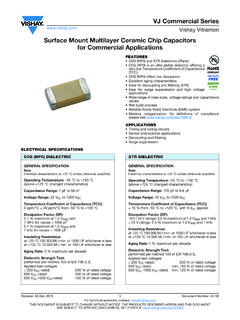Transcription of Product Bulletin: HSR Pressure Reducing Regulator …
1 Type HSR Pressure Reducing Regulator for Residential, commercial or Industrial applications Meets or Exceeds ANSI / CSA Requirements Globe Bodies Angle Bodies Fixed Factor / PFM Accuracy High Capacity Internal Relief High Capacity Compact DesignTyPE HSR AnGlE BoDyTyPE HSR GloBE BoDyP1275_1P1524_1 Bulletin 2017 Type HSR1. The Pressure /temperature limits in this Bulletin and any applicable standard or code limitation should not be Specifications section lists specifications for Type HSR Pressure Reducing Regulators.
2 Specifications for a given Regulator as it originally comes from the factory are stamped on the spring case nameplate. Body Sizes (Inlet x outlet) and End Connection StylesGlobe Body: 3/4, 3/4 x 1, 1 and 1-1/4 NPTA ngle Body: 3/4, 3/4 x 1 and 1 NPTA llowable Inlet Pressures(1)Emergency: 150 psig / barMaximum operating Pressure : See Table 1 Allowable outlet Pressures(1)Emergency (Casing): 25 psig / barMaximum operating Pressure to Avoid Internal Parts Damage: 3 psi / bar differential above outlet Pressure settingoutlet Pressure RangesSee Table 2orifice SizesSee Table 1 Typical Regulating Capacities3/4 nPT Globe.
3 See Table 83/4 x 1 nPT Globe: See Table 91 nPT Globe: See Table 101-1/4 nPT Globe: See Table 113/4 nPT Angle: See Table 123/4 x 1 nPT Angle: See Table 131 nPT Angle: See Table 141% Pressure Factor Accuracy: See Tables 6 and 7 Flow and Sizing CoefficientsSee Table 4 Internal Relief PerformanceApproximate Internal Relief Start-To-Discharge Point: 6 to 12 in. / 15 to 30 mbar above outlet Pressure setting (Applies to 6 to 8 in. / 15 to 20 mbar and 8 to 10 in. / 20 to 25 mbar springs only)Relief Performance: See Figures 3 and 4 and Table 14 Temperature Capabilities-20 to 160 F / -29 to 71 CPressure Setting AdjustmentAdjusting ScrewPressure RegistrationInternallockup Performance During normal operationoRIFICE SIZEloCKUP ABoVE SETPoInTloCKUP ABoVE Case Vent ConnectionStandard: 1 NPT with removable screenoptional: 3/4 NPT with removable screenConstruction MaterialsBody: Cast ironBody Gasket: Nitrile (NBR) Closing Cap.
4 ASA thermoplastic (provides UV-ray protection)Adjusting Screw: Delrin Diaphragm Case, Spring Case, Diaphragm Plate, orifice and Valve Stem: AluminumPusher Post or Relief Valve Seat: Delrin Diaphragm and Disk: Nitrile (NBR)Control Spring: Zinc-plated steel Relief Valve Spring: Stainless steelRelief Valve Spring Retainer: Stainless steelVent Screen: Stainless steellever Pin: Stainless steelSpring Seat, lever and other Metal Parts: Plated steelBody Vent Mounting PositionsSee Figure 5 Approximate Weight4 lbs / 2 kgDesigned, Tested and Evaluated Consistent With:ANSI / CSA IntroductionThe Type HSR direct-operated, spring-loaded regulators provide economical Pressure Reducing control in a variety of residential, commercial and industrial applications .
5 These regulators can be used with natural, manufactured or liquefied petroleum gases and have the same inlet and outlet Pressure addition, the Type HSR regulators have internal relief across the diaphragm to help minimize overpressure. Any outlet Pressure above the start-to-discharge point of the nonadjustable relief valve spring moves the diaphragm off the relief valve seat, allowing excess Pressure to bleed out through the screened spring case is a mark owned by du Pont de Nemours and HSRE0908_08/2007 Figure 2.
6 Type HSR Pressure Regulator Operational SchematicoRIFICE SIZEWIDE-oPEn Cg FoR RElIEF SIZInGMAXIMUM oPERATInG InlET Pressure To oBTAIn GooD REGUlATInG 1. Maximum Operating Inlet PressureoUTlET Pressure RAnGESPRInG PART nUMBERSPRInG ColoRSTAnDARD CloSInG CAP ColoRSPRInG WIRE DIAMETERSPRInG FREE lEnGTHIn. to 610 to to 815 to to 1020 to to to to 2031 to to 3550 to to to barT14403T0012 Light 2. Outlet Pressure RangesoUTlET Pressure RAnGESTAnDARD oUTlET SET PRESSURESTAnDARD SET GAS FloW, SCFH / nm3/hIn.
7 To 610 to 1551250 / to 815 to 207178 to 1020 to 2592210 to to to 2031 to 50143520 to 3550 to 871 to to bar2 barTable 3. Standard Outlet Pressures and Set FlowsTable 4. Flow and Sizing CoefficientsInlET PRESSUREoUTlET PRESSUREATMoSPHERIC PRESSUREVAl VE DISKoRIFICElEVERPUSHER PoSTRElIEF VAlVE SPRInGConTRol (MAIn) SPRInGSTEMoRIFICE SIZEWIDE-oPEn RESIZInG RElIEF SIZInGC1 IEC SIZInG HSRC apacity InformationThe high efficiency flow-through design provides maximum capacity for a given orifice size.
8 Tables 6 through 14 give the HSR Series flow capacities at selected inlet pressures and outlet Pressure settings. Flows are in SCFH (at 60 F and psia) and Nm3/h (at 0 C and bar) of specific gravity natural gas. To determine equivalent capacities for air, propane, butane or nitrogen, multiply the listed SCFH capacity by the following appropriate conversion factor: air for air, propane , butane , nitrogen For gases of other specific gravities, multiply the given SCFH capacity by and divide by the square root of the appropriate specific gravity.
9 If capacity is desired in Nm3/h, multiply SCFH by Critical Pressure DropsUse this equation for critical Pressure drops (absolute outlet Pressure equal to one-half or less than one-half the absolute inlet Pressure ).Q = P1(abs)Cg( )where, Q = gas flow rate, SCFH Cg = gas sizing coefficient P1 = absolute inlet Pressure , psiaFor Non-Critical Pressure DropsFor Pressure drops lower than critical (absolute outlet Pressure greater than one-half of absolute inlet Pressure ), use the following formula.
10 5203417 GTC1P1PQ =CgP1 SINDEG where, Q = gas flow rate, SCFH G = specific gravity of the gas T = absolute temperature of gas at inlet, Rankine Cg = gas sizing coefficient P1 = absolute inlet Pressure , psia C1 = flow coefficient P = Pressure drop across the Regulator , psiThen, if capacity is desired in normal cubic meters per hour at 0 C and bar, multiply SCFH by InformationCarefully review each specification and complete the Ordering Guide on page 23.


















